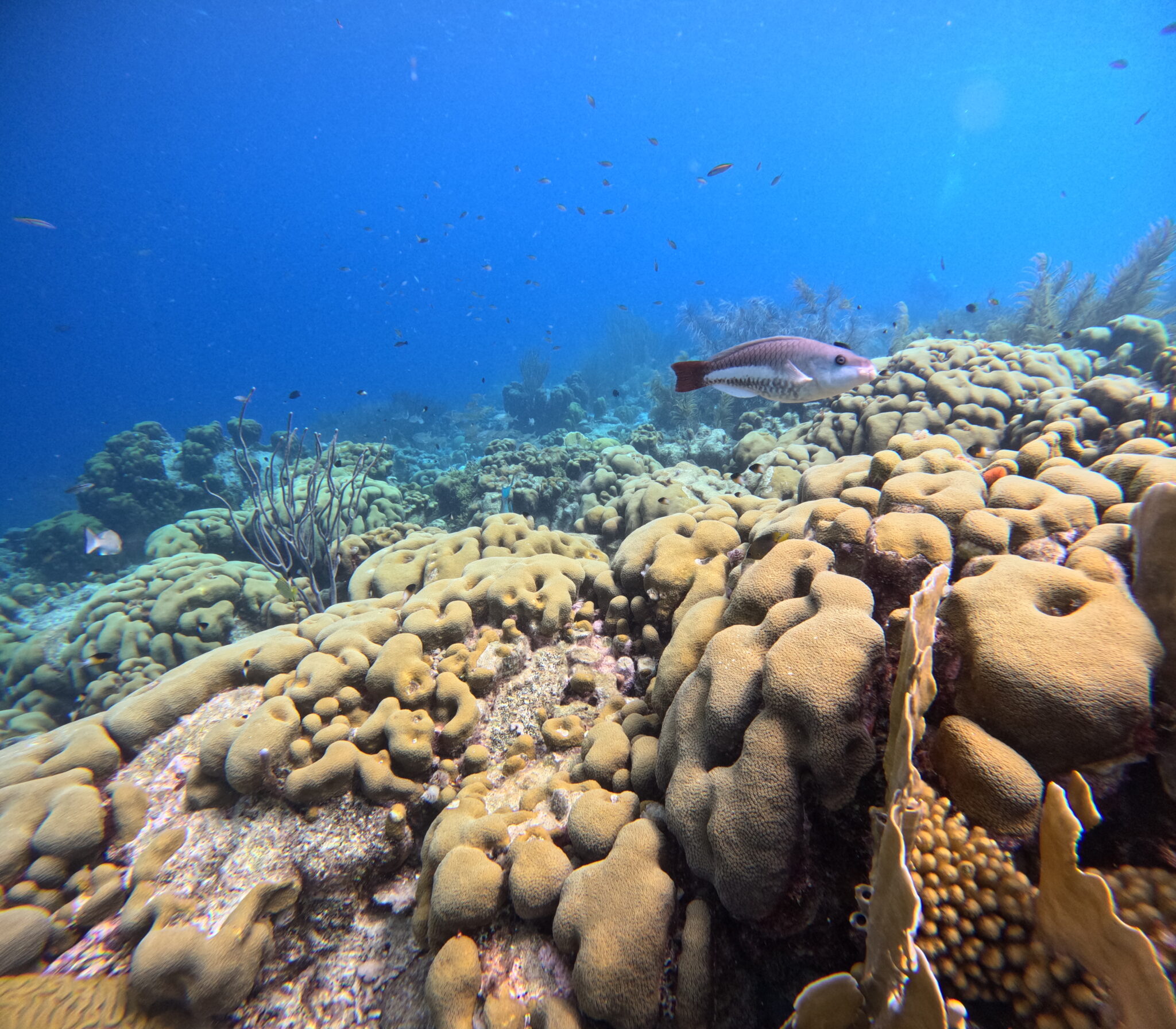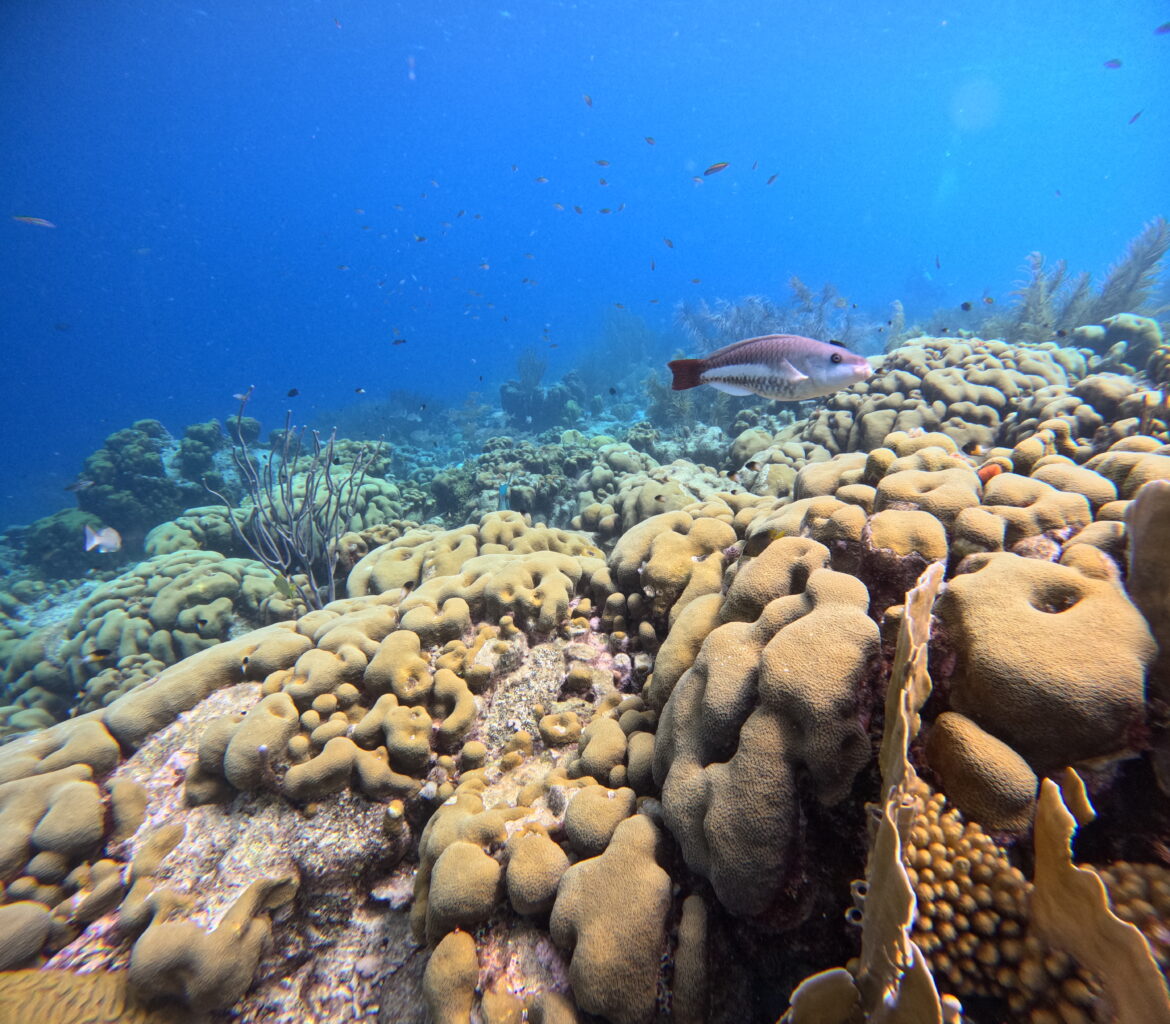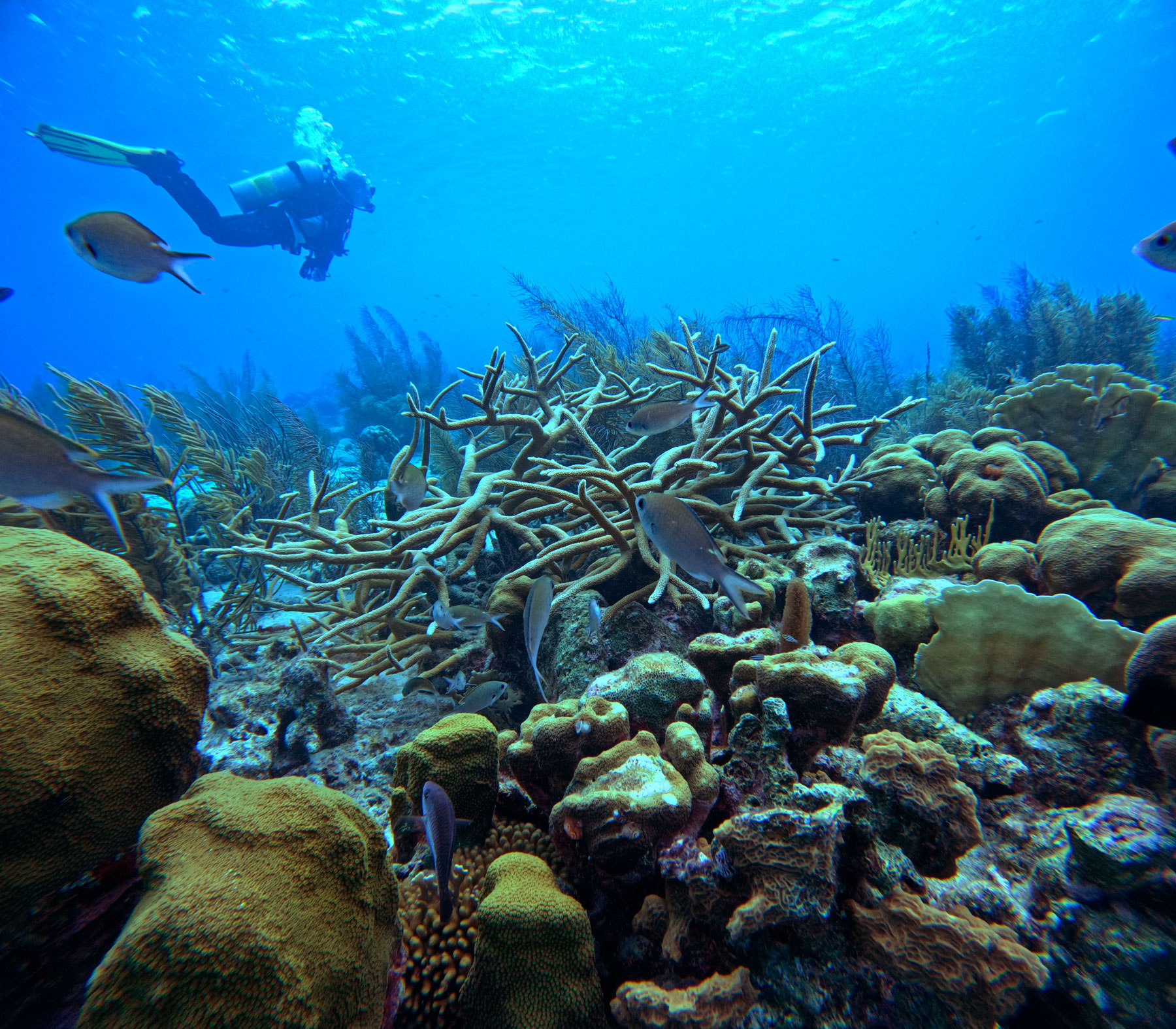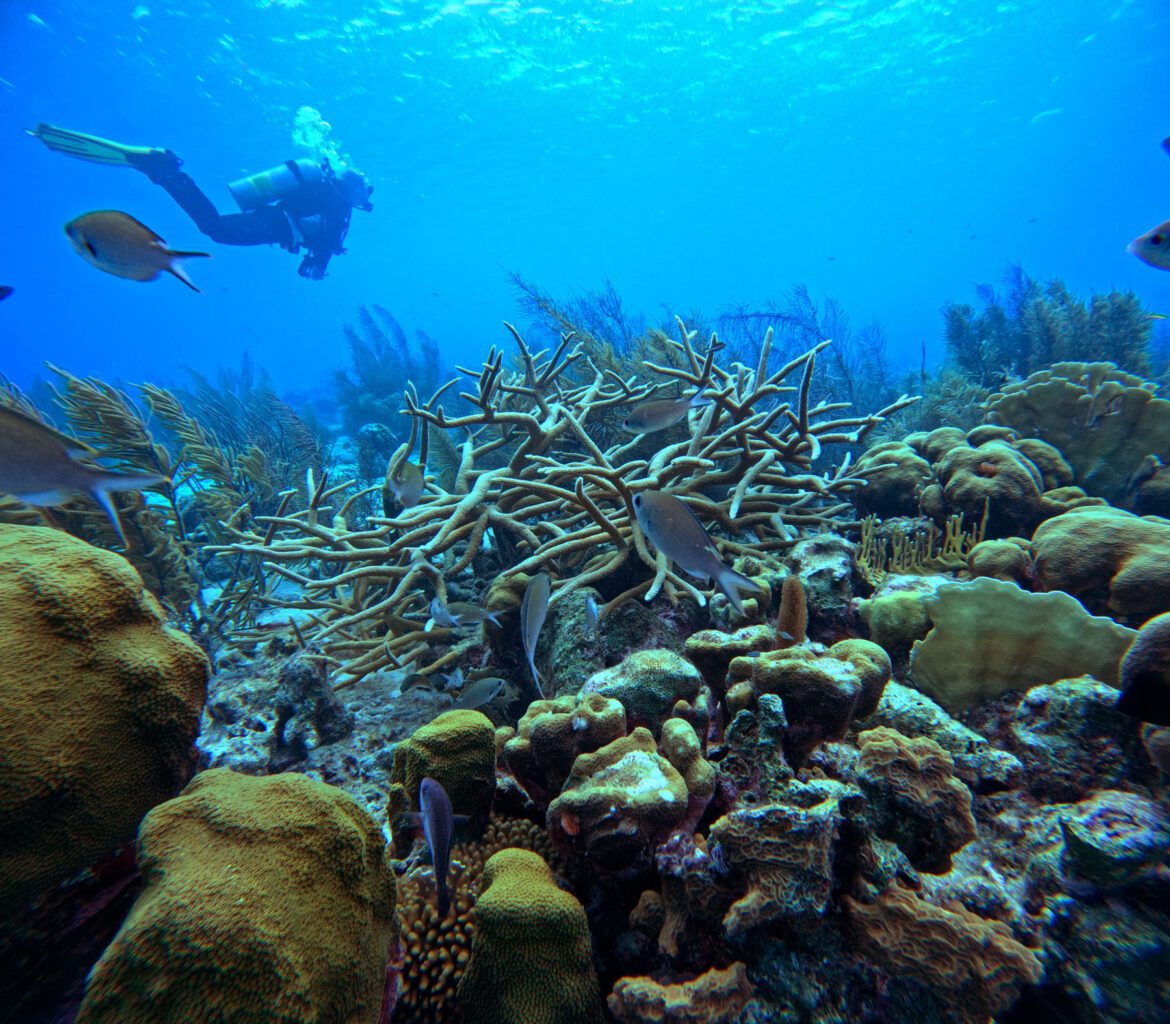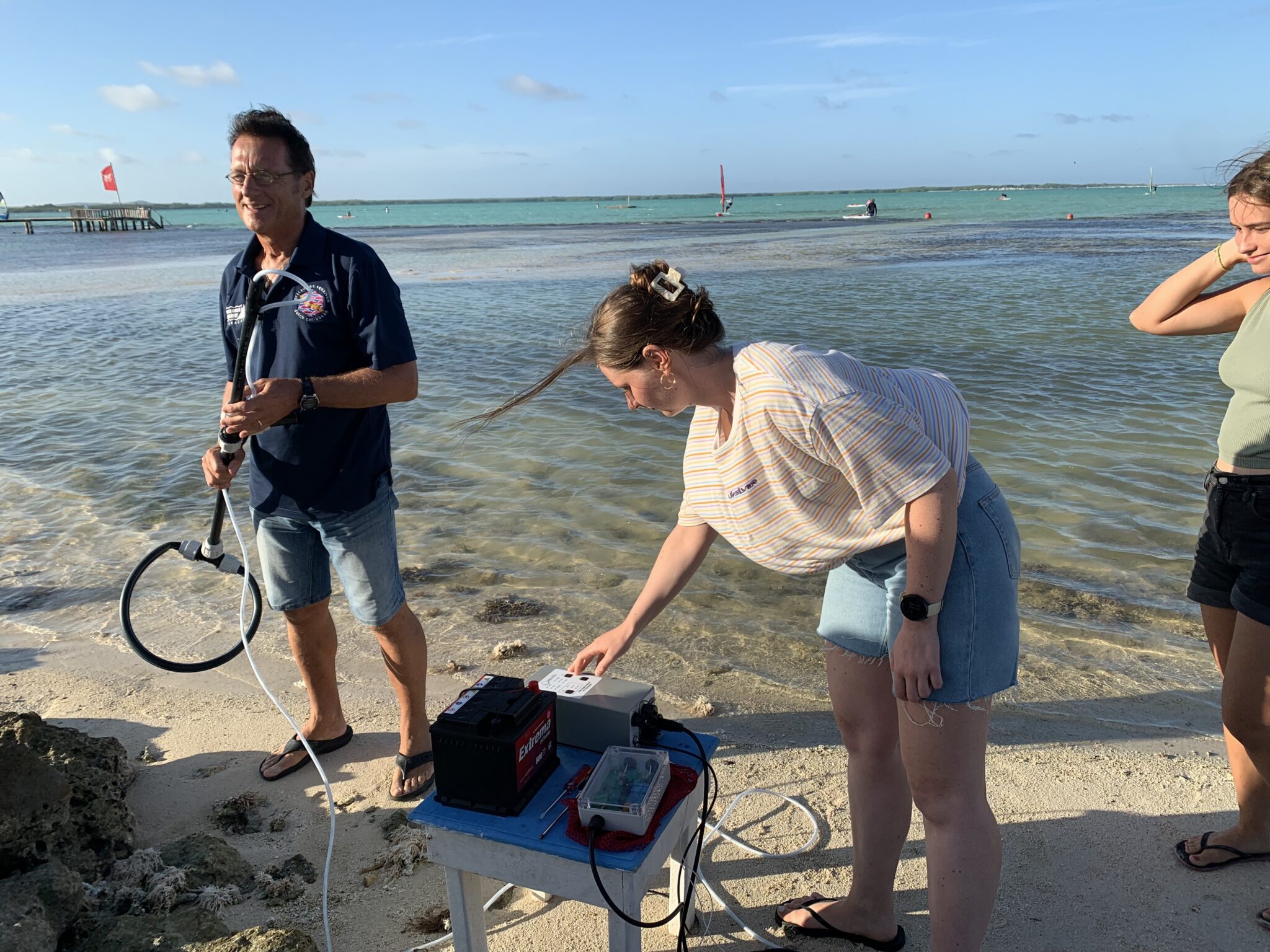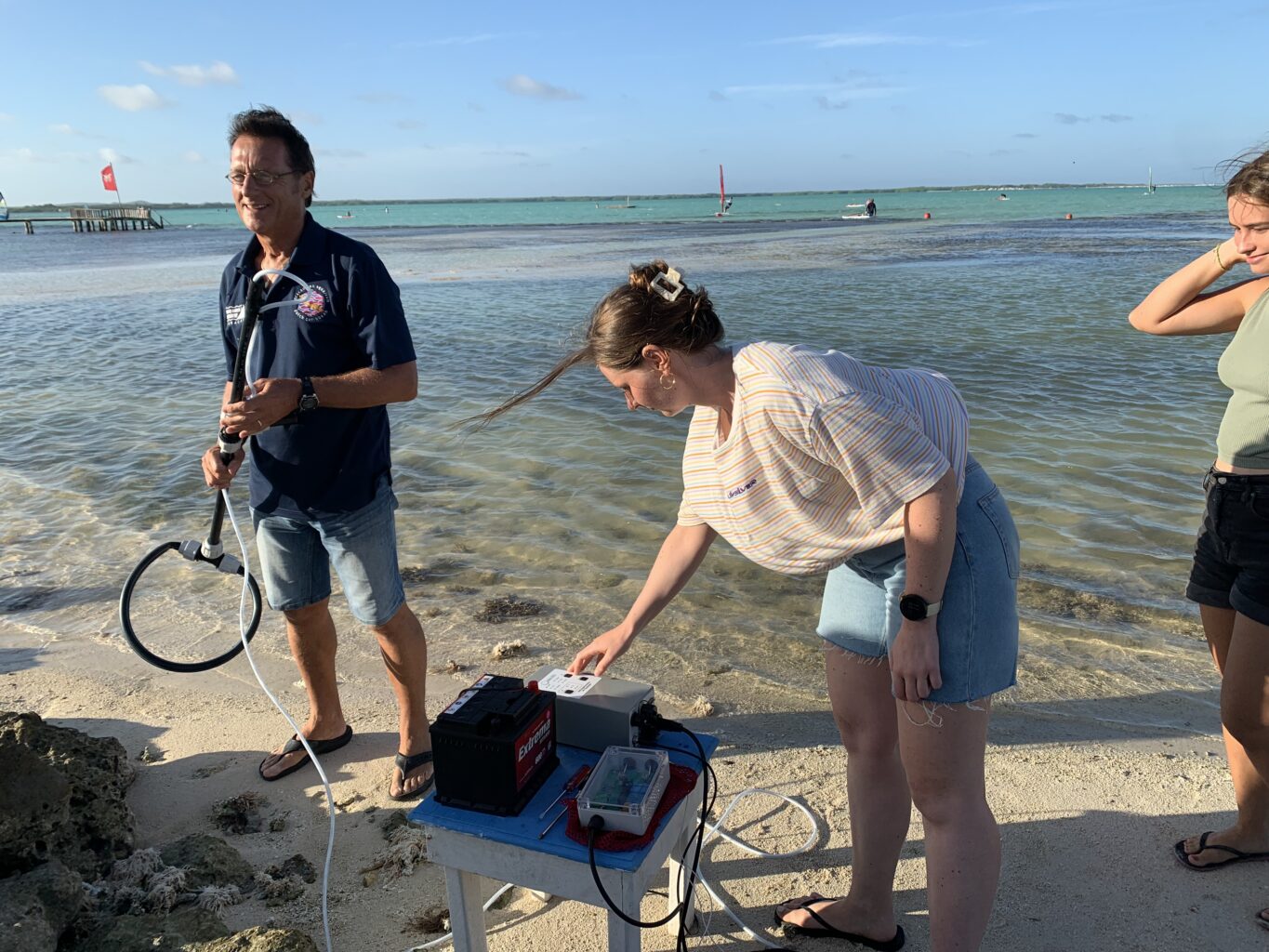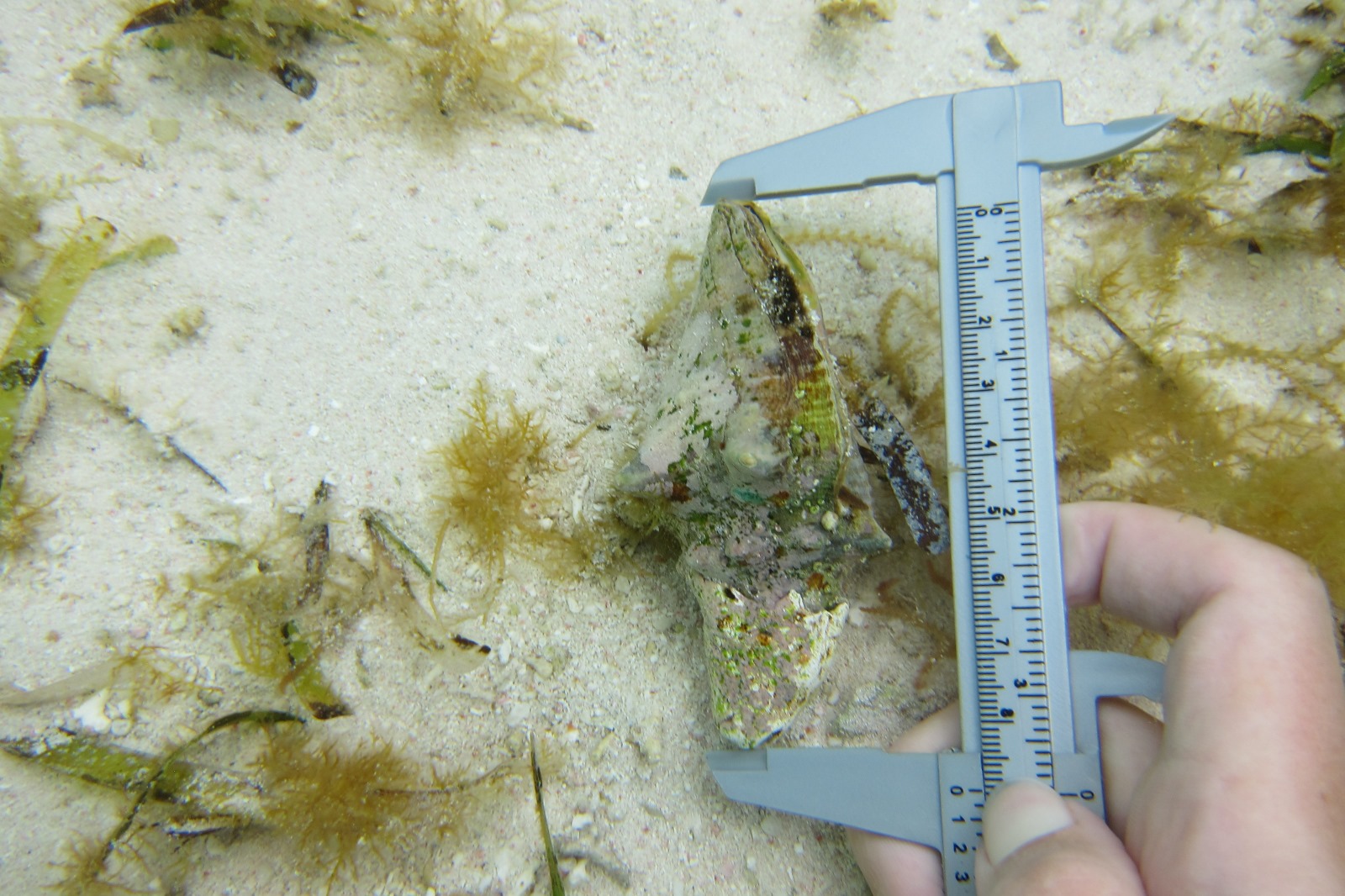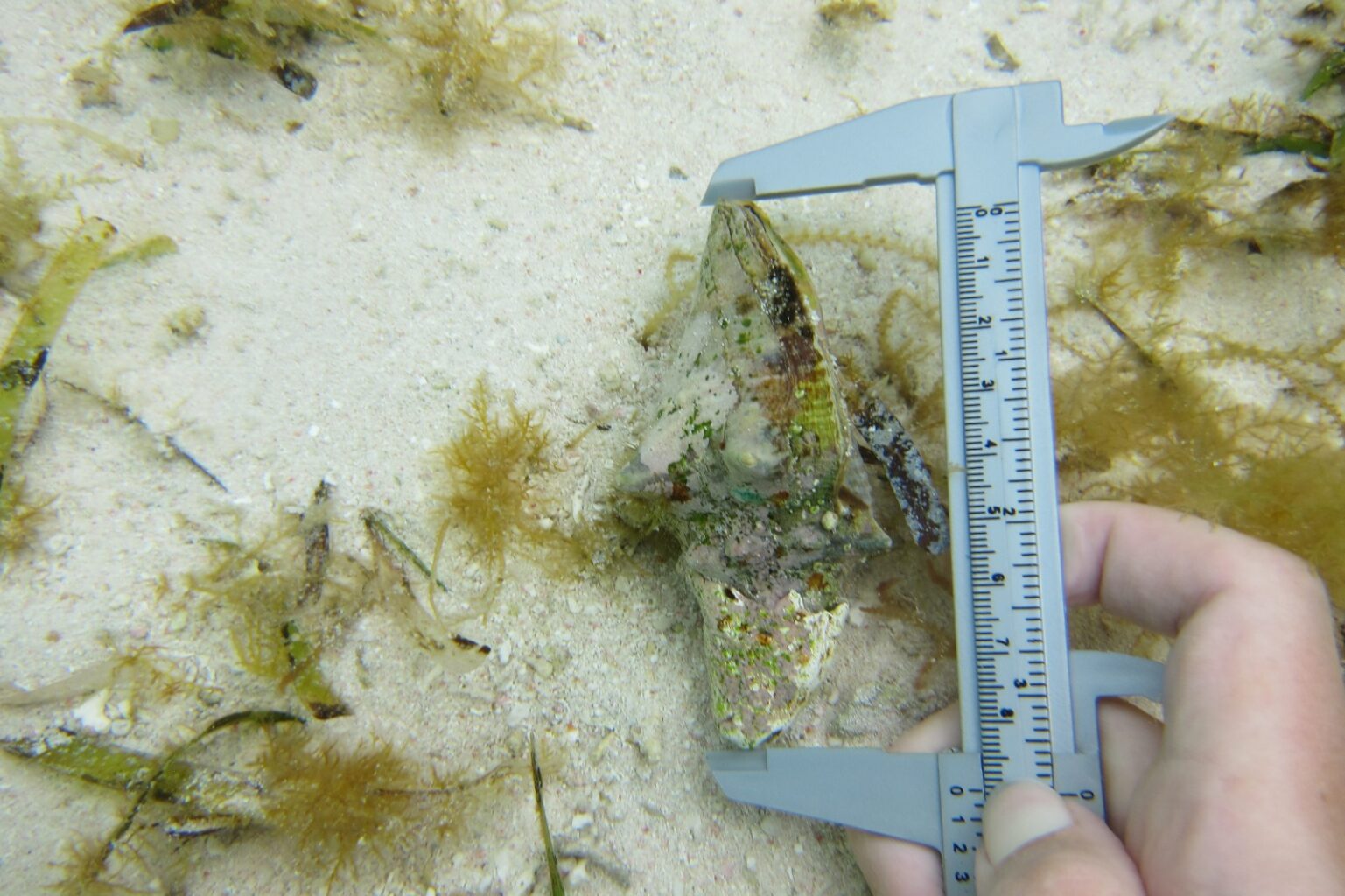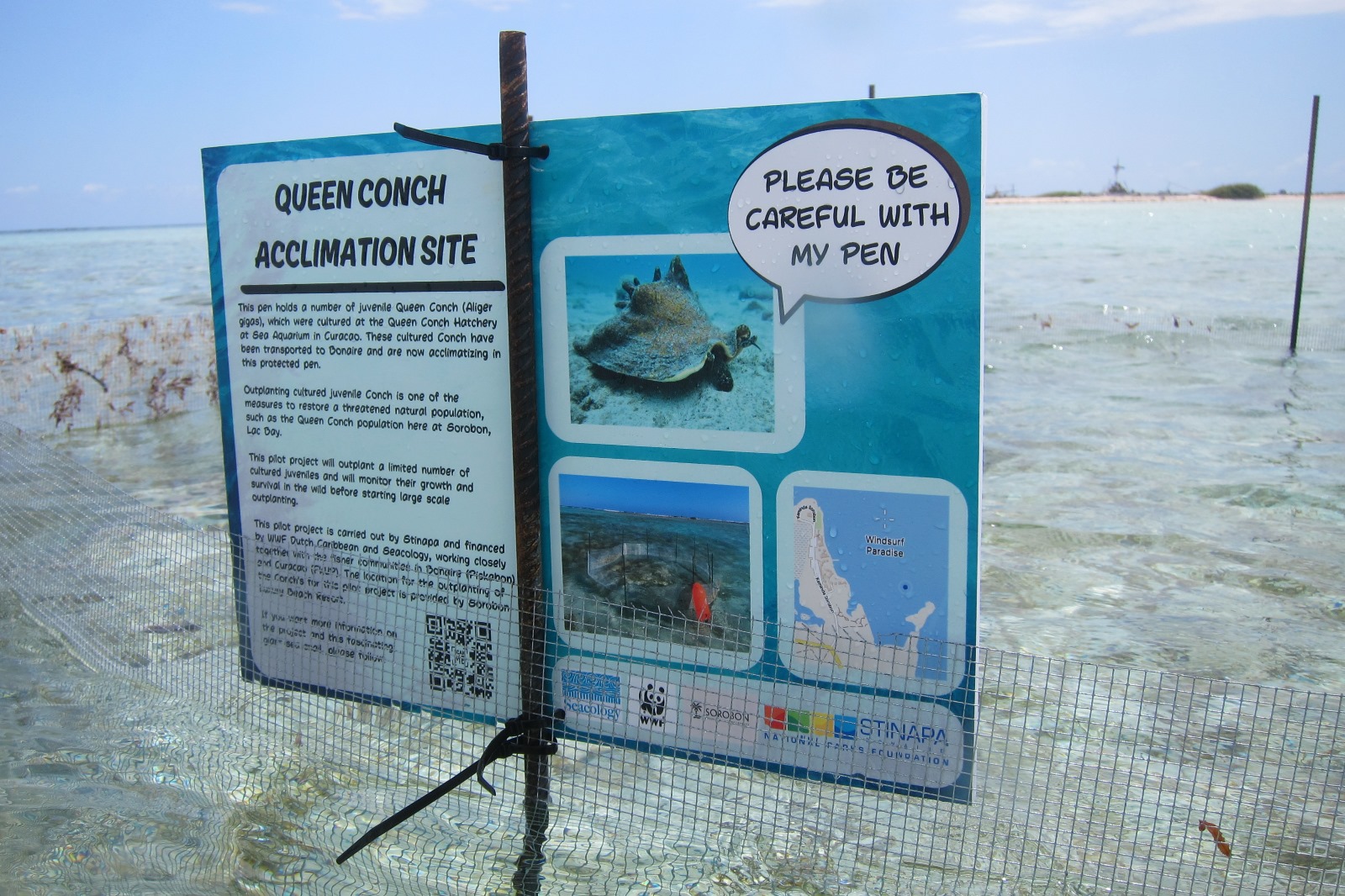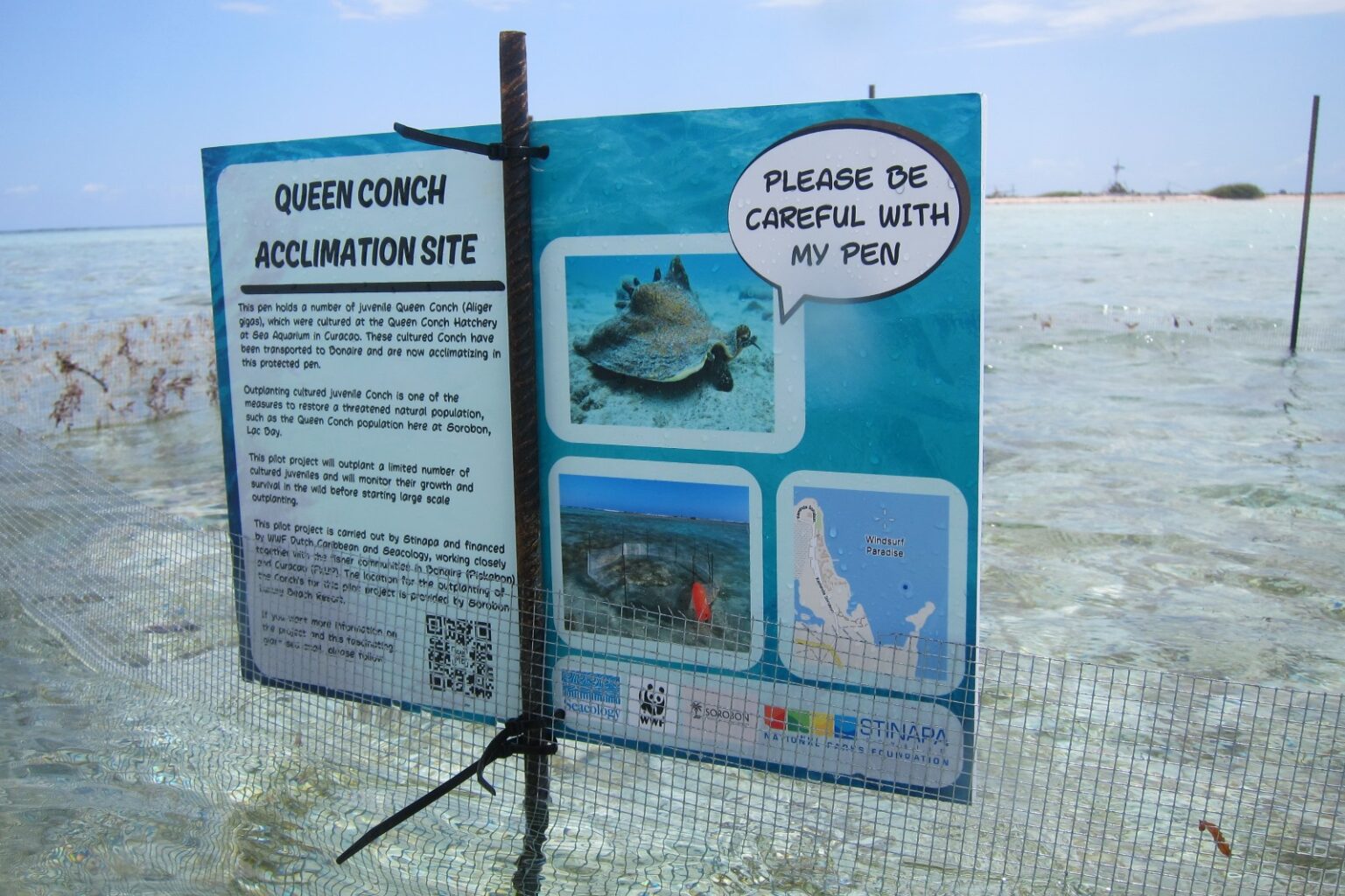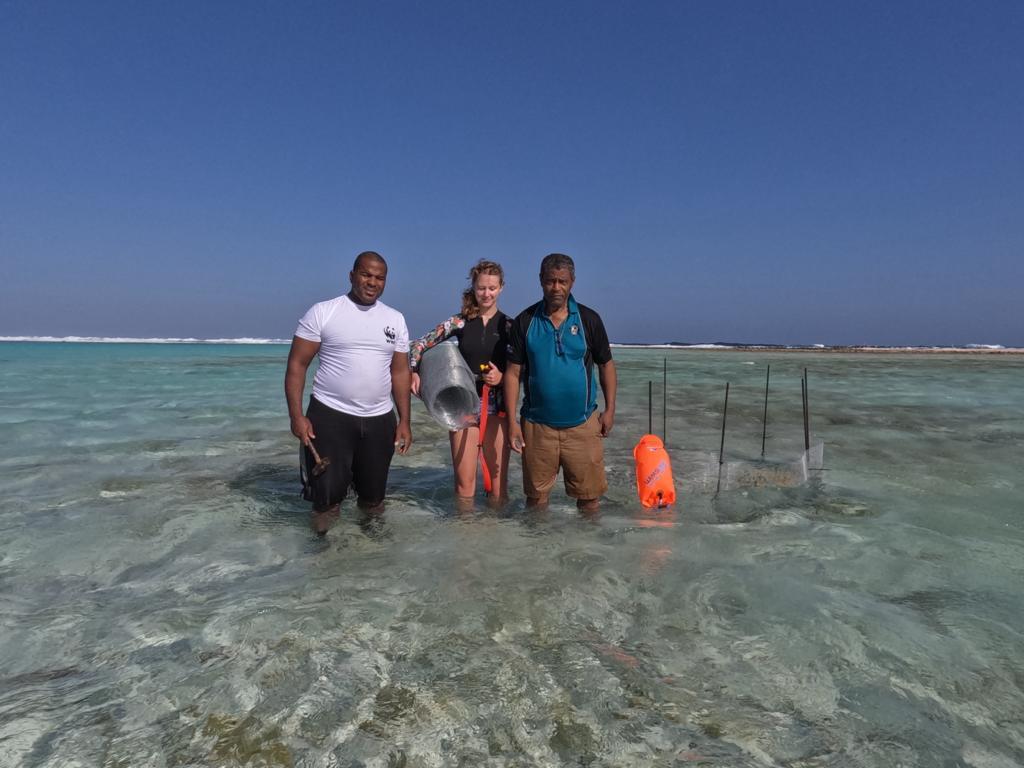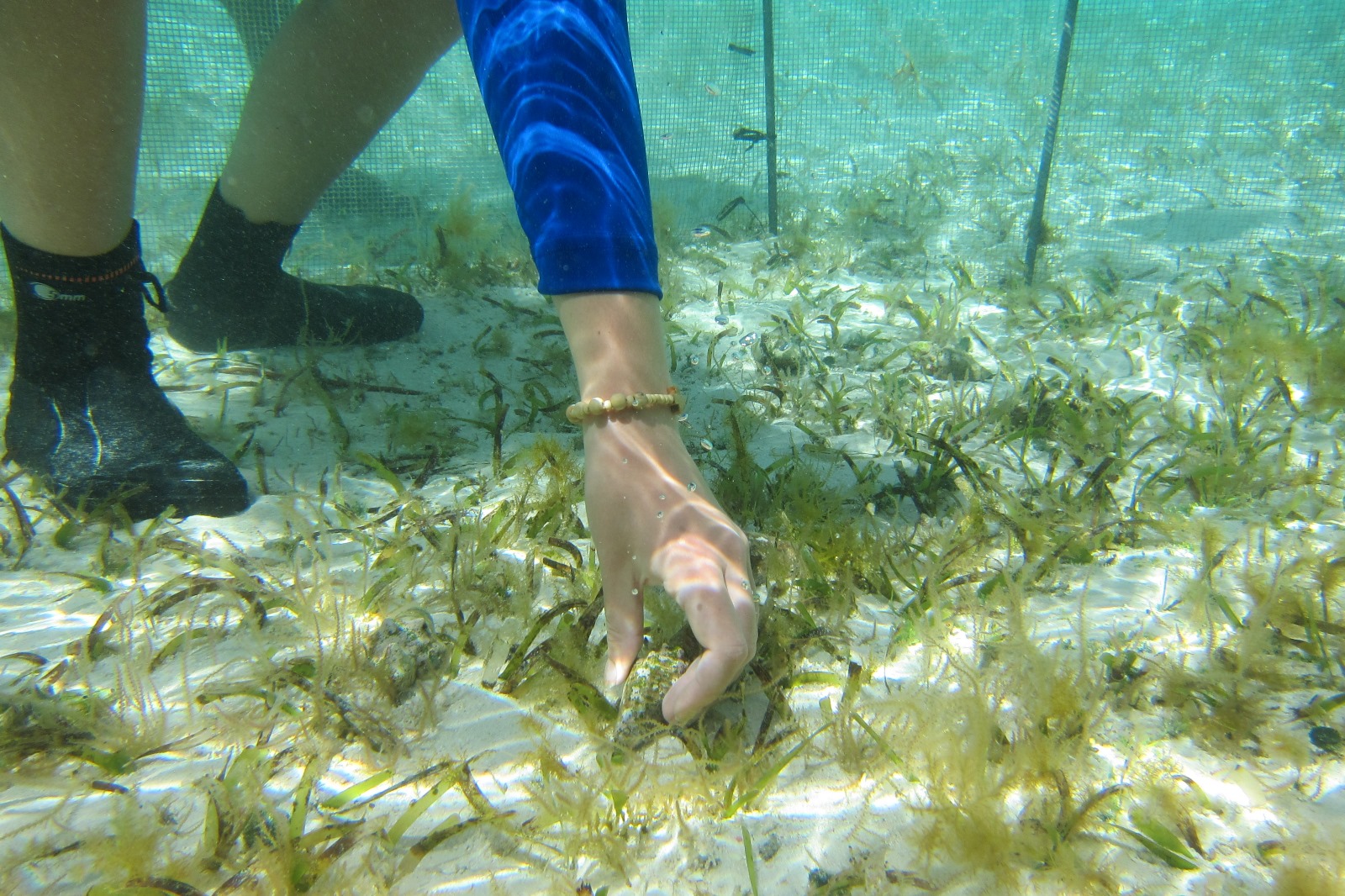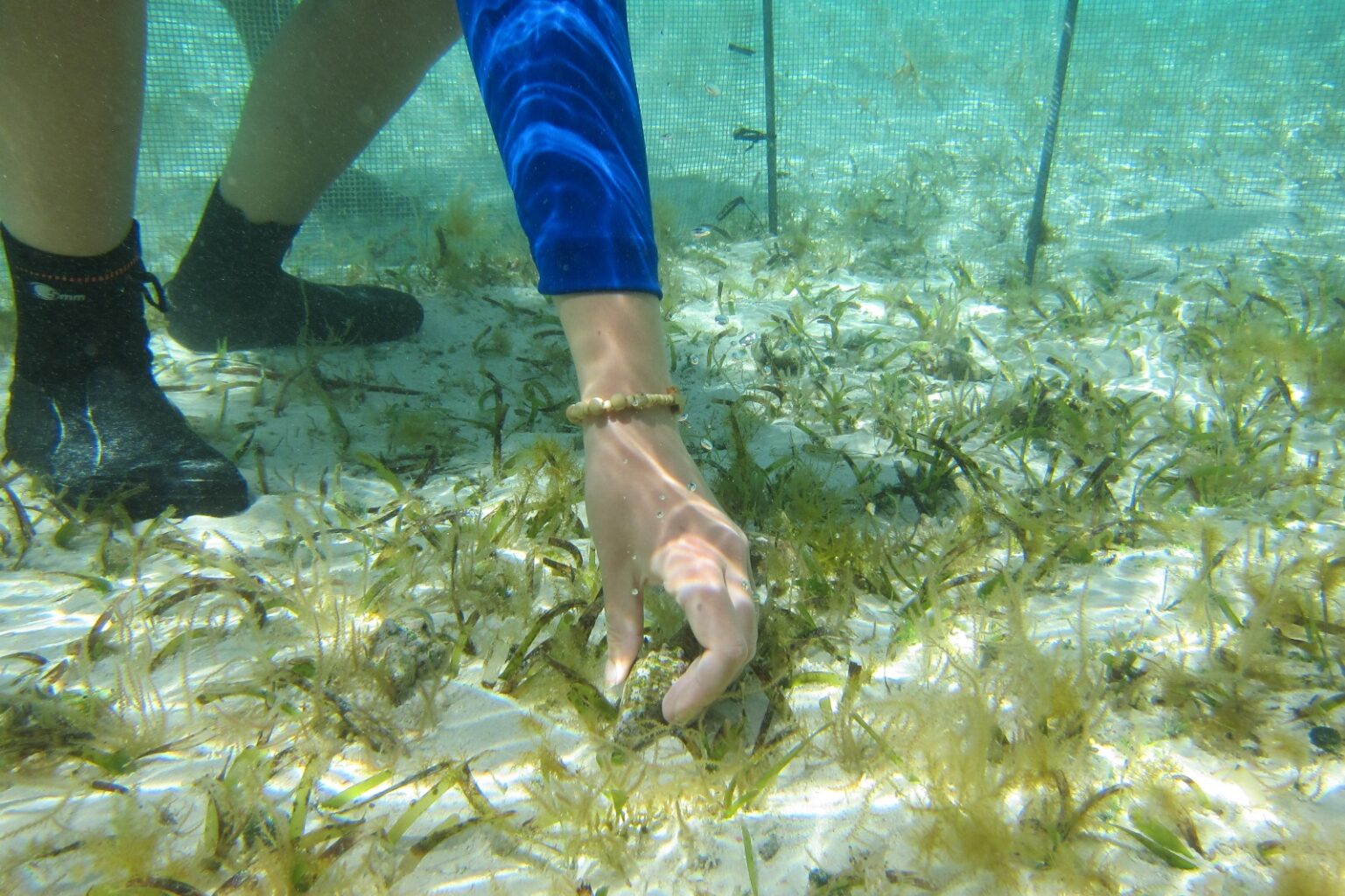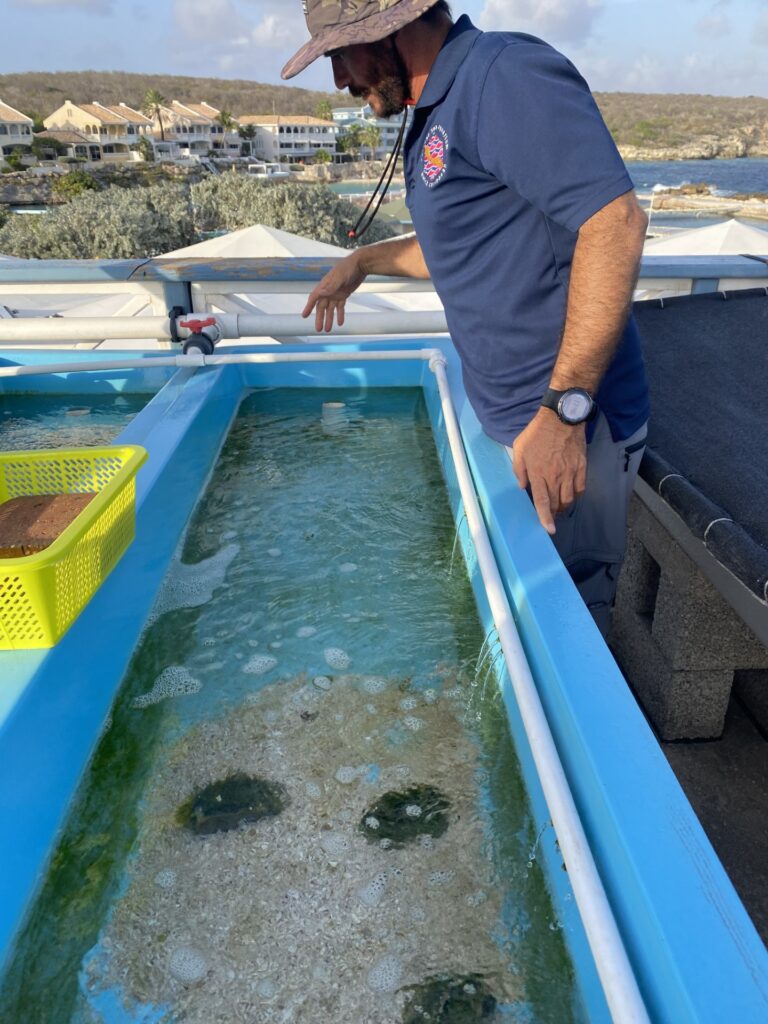The beautiful Queen conch is a symbol of the Caribbean. It also keeps seagrass and coral reefs healthy by grazing on macro algae and organic matter. But it can grow almost a foot long and weigh up to six pounds, and is prized both for its meat and for its glossy shells. Overfishing has led to significant population declines, and the species is now classified as threatened. On Bonaire, people illegally harvest both adults and juveniles—especially in shallow Lac Bay, where they are easy to gather.
To restore the once-large Queen conch population in the bay, cultured year-old juveniles will be put into the bay. Lac Bay, which covers 1,730 acres and has mangroves and seagrass, is a refuge for other threatened and endangered species. It is part of the Bonaire National Marine Park and is a designated wetland of international significance.
Our project partner, the Bonaire National Parks Foundation, manages Bonaire’s nature parks for the government. They will reach out to educate local fisherfolk, park rangers, and schoolchildren. They will also hire fisherfolk to monitor and protect the outplanted juveniles. The fishers know more about the Queen conch than anyone else on the island and have a strong incentive to see that the fishery is restored. This makes use of their skills and reduces the financial pressure that leads to overfishing.
In five to ten years, there could be enough Queen conch in Lac Bay to support sustainable harvesting. This would not only give people local, high-quality protein, but also bring back a creature that has rich cultural and ecological significance in the islands.


